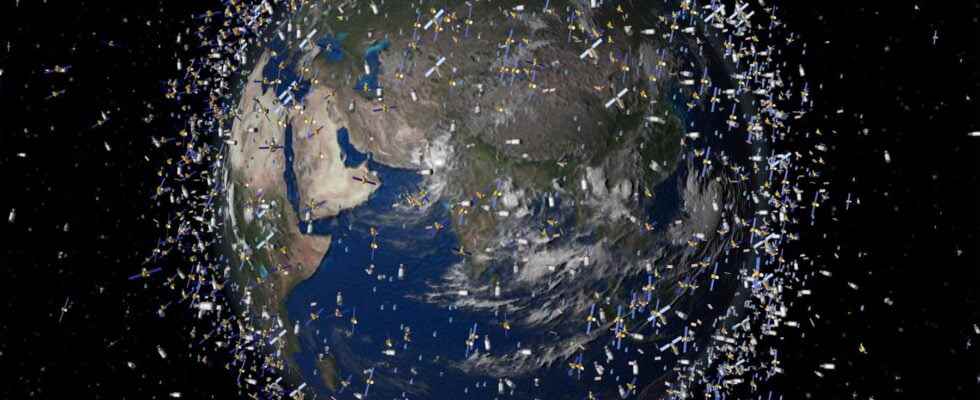On land, in the sea and in the air, there are regulations to regulate traffic and the safety of users. Surprisingly, there is no space traffic management system to regulate human activities in space, with all the risks that this entails. With the Spaceways project, the European Commission has decided to adopt a “highway code” for space. Our explanations and those of Telespazio France experts.
You will also be interested
[EN VIDÉO] ESA spots one-millimeter space debris around Earth ESA has created an animation representing all the debris that we are able to spot in space … the smallest are 1 millimeter!
Space today is in many ways additional economic territory. Spurred on by an acceleration in public and private investment, space activities will intensify significantly over the next few years, and become a major geostrategic issue. This development is exacerbated by global technological competition and the opening of new promising markets and services, as well as a strong desire to strengthen human activities by orbit.
Surprisingly, despite an ever increasing number of satellites in orbit, there is no regulation or space traffic management system, as is the case with aviation, for example. As a result, this sector, however strategic, resembles a Far West due to the lack of global authority supported by restrictive laws, in particular for low orbits and geostationaries which are the most used today. Today, space traffic management is based solely on good local and voluntary, non-binding practices which are not always well managed or even applied.
Space is like a Wild West due to the lack of global authority backed by binding laws
When they exist, these rules aiming to limit the statistical risks of collision between satellites and debris, stipulate that debris should not be intentionally produced in orbit, ask to passivate satellites at the end of their life by consuming the residual fuel which could generate other debris by exploding and depleting the batteries, to respect the “rule of 25 years ”for satellites in low orbit (satellites at the end of their operational life must enter theatmosphere within 25 years) and place the geostationary satellites unused in ” orbit cemetery To release their location. But on their own, these rules are no longer sufficient to guarantee secure traffic and limit the risk of collisions.
Regulated and secure space traffic
This lack of regulation of space traffic partly explains the very large number of traffic alerts. collision which are triggered when the risk of collision between two satellites exceeds a certain probability threshold. In some cases, these situations require avoidance maneuvers which are performed manually. With more and more satellites in orbit, the deployment of mega-constellations and the increase in human activities and robotic in low orbit, the multiplication of these maneuvers will pose many problems in terms of recurrence, prioritization between satellites or associated costs (fuel, satellite downtime, etc.)
Space users are therefore becoming aware of the urgent need to put in place real legislation on space activities and satellite traffic to guarantee the durability long-term space, before a serious problem arises. With satellites already in place, others moving up to their orbit or coming down, the risk of collisions will sharply increase, making the calculation of avoidance maneuvers which are currently mainly manual more complex. A situation which pushes the ESA, which almost lost the Aeolus satellite in September 2019, to consider entrusting the execution of these avoidance maneuvers to a artificial intelligence.
Put in place a real regulation of space traffic
At the start of the year, the European Commission kicked off the Spaceways project which aims to draw the outlines of a space traffic management system in order to protect the satellites already in orbit and all the next ones. His goal is to “ define a traffic code and determine the conditions under which licenses and flight authorizations could be issued », Specifies Telespazio France.
Its objective is to provide, by June 2022, recommendations and guidance to the European Commission concerning the ” space traffic management as well as a legal, political and economic assessment leading to final recommendations and guidelines for implementation “.
Spaceways recommendations and conclusions are therefore eagerly awaited. On the one hand, because they will include legal constraints which “ will not only affect the regulation of space traffic as such to preserve space for the space missions of tomorrow with safety distances to be respected, traffic routes without almost any risk for example “. On the other hand, Spaceways should also offer solutions to reduce the vulnerability of satellites to collisions and ” intervene from the conceptual and operational phases of the satellites which will have to include deorbitation devices “.
Interested in what you just read?
.
fs3
